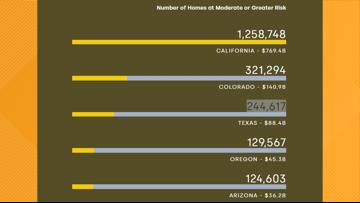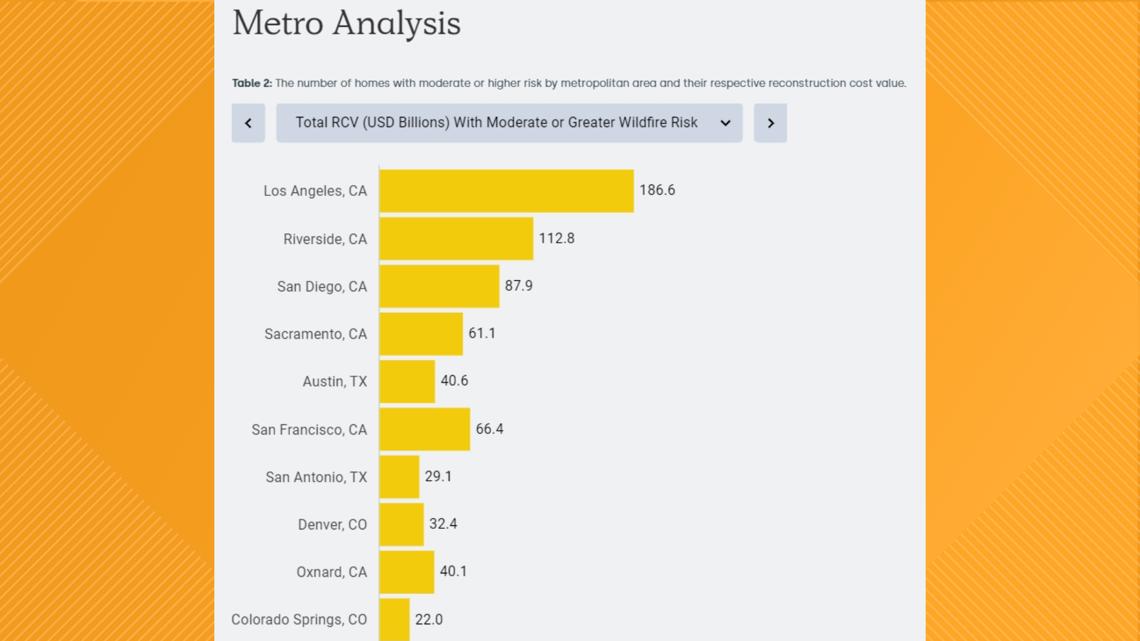- Weather Impact Alert: Cold front could trigger severe weather in Houston area this weekend | See timeline
- Violent storms cut through the South and Midwest, spawning tornadoes and killing 3
- Above-normal active 2025 hurricane season predicted by Colorado State University
- Cold front could trigger severe weather in Houston area this weekend | Timeline for potential storms
- Severe weather possible for Houston this weekend | Weather Impact Alert issued
Austin metro ranked fifth-highest in nation for wildfire damage risk, according to new report

AUSTIN, Texas — The property solutions group CoreLogic has released its annual Wildfire Risk Report, and the Austin area ranks highly for the risk of wildfires.
CoreLogic came up with the rankings by evaluating many factors, including slope, aspect, surface composition, drought condition and winds. Based on this data, Texas ranks third for the number of homes with “Moderate” or “Greater” wildfire risk, with 244,617 homes and $88.4 billion in property falling into this category.
California far and away ranks at number one, with over 1.2 million homes and nearly $770 billion in property falling into those same categories.

Additionally, the Austin area ranks as the fifth-highest metropolitan area and the highest located outside of California at “Moderate” or “Greater” risk for wildfire loss, with nearly 95,000 homes and $40.6 billion falling into this category. Los Angeles is the top-ranked metropolitan area, and has more homes at risk than all of Texas and an estimated $186.6 billion worth of property in the “Moderate” or “Greater” risk area.




However, there is a very important factor that CoreLogic does not include in its report, and that’s median home prices.
In addition to California having the highest risk of wildfire loss, the Golden State also has the highest median home price in the nation at $787,000. Colorado, the state with the second-highest risk, sits with an average median home price of $612,000, according to Forbes. However, the same business media company lists the median home price in the Lone Star State at just $348,000.
Thus, it can be effectively determined that population density, along with higher median home prices, can, in addition to drought and other factors, lead to larger wildfire losses nationwide.
Even in a “cheaper” state to live in like Texas, these stats show how important our role is in preventing tragic wildfires, such as the Lahaina, Hawai’i fire in 2023 or the Bastrop County Complex Fire in 2011.